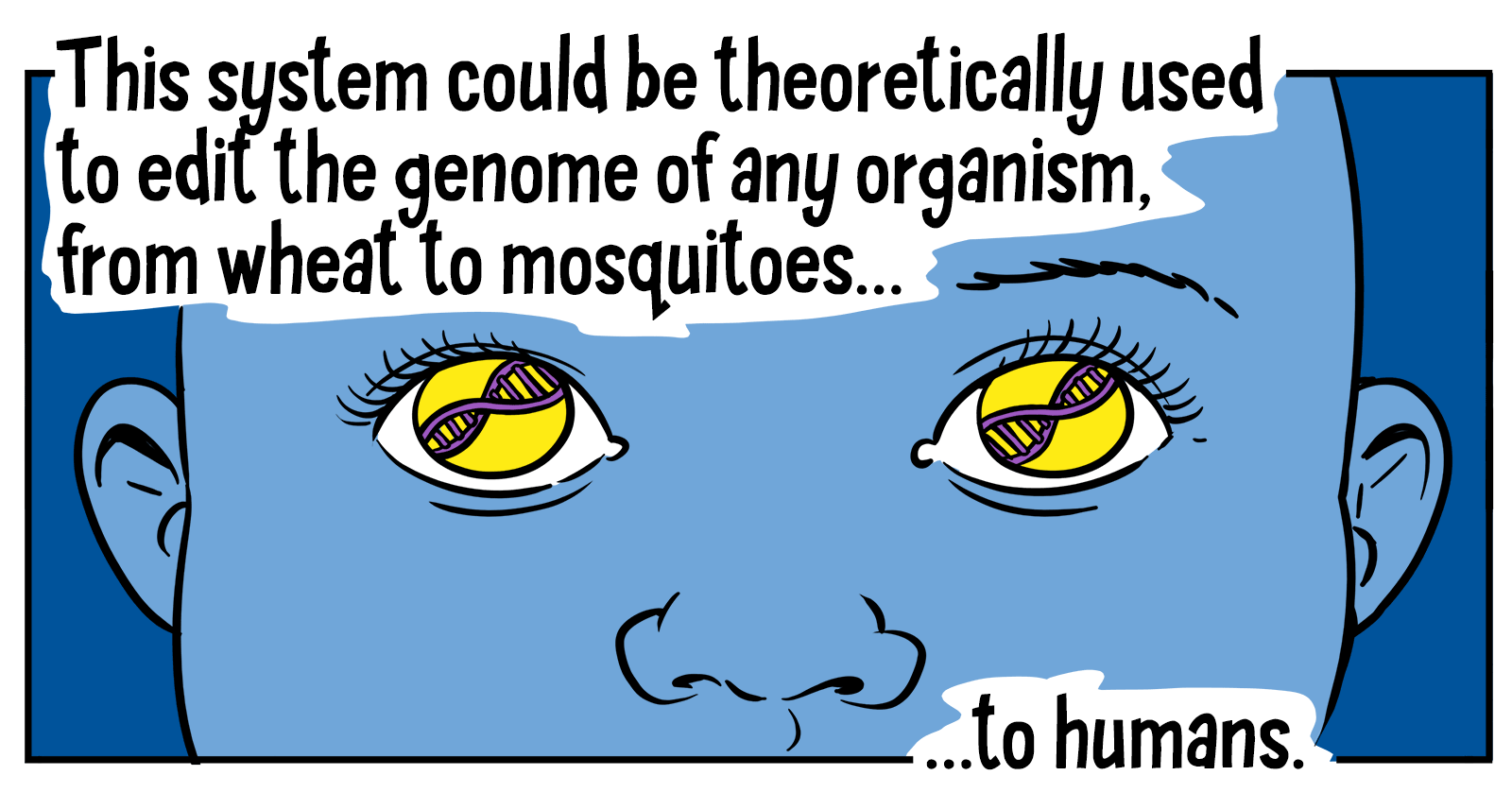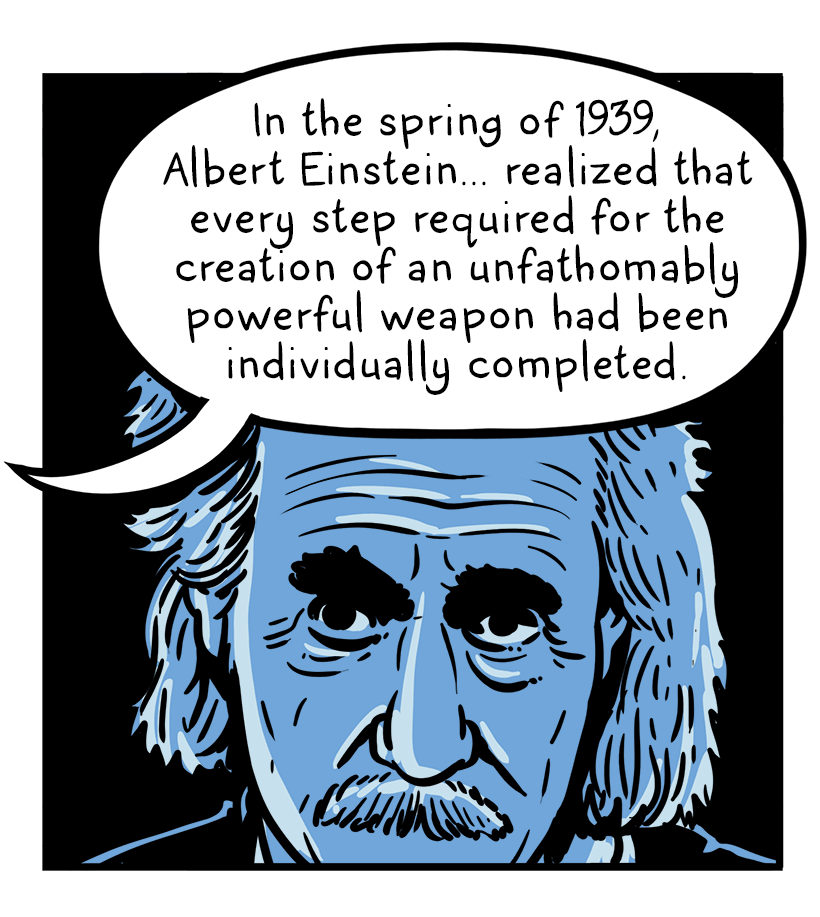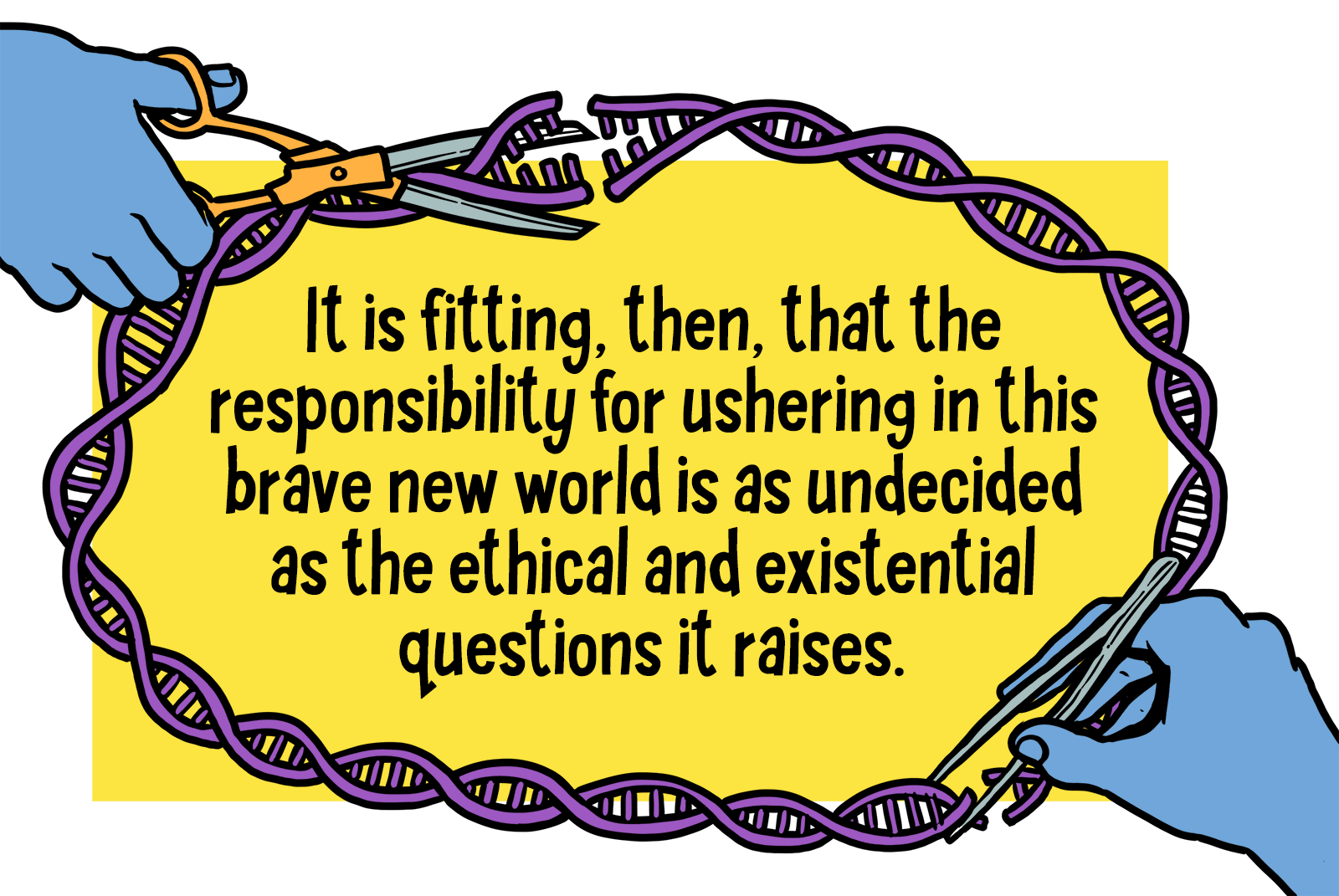Don’t Miss This: The Story of CRISPR Told in a Comic
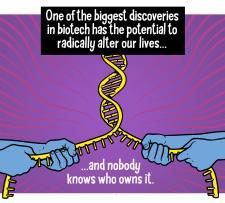
The billion-dollar patent battle over CRISPR/Cas-9 “gene editing” technology is layered with blockbuster scientific papers, media storms, superstar researchers, and legal drama, which are all the right elements to make up a thrilling graphic novel. Illustrator Andy Warner helps to break down the complexities of the still unraveling CRISPR story through a recent comic strip, “Bad Blood: Who gets credit for the technology to cut-and-paste the human genome?”
“Bad Blood” animates the key players in the ongoing legal fight between the Broad Institute and UC Berkeley, focusing on the increasingly recognizable trio of CRISPR co-discoverers Jennifer Doudna, Emmanuelle Charpentier, and Feng Zhang. The strip also illustrates journalists Antonio Regalado (MIT Tech Review) and Sharon Begley (currently STAT) who have been closely following the patent case and technical developments, and cites their thoughts on the ambiguities of credit for CRISPR and its potential social conseqeunces.
|
Strikingly, after explaining the nitty-gritties of the science and patent law underlying gene editing technologies, Warner leaves readers with a thought-provoking parallel: the historic development of the nuclear bomb, and the anguishing dilemma it posed for the scientists involved with the effort. His portrayal of Albert Einstein invokes the volatile political climate during which the atomic bomb was developed, and suggests the current need to question the social and political context of CRISPR and how this will shape the potential outcomes of its uses. |
|
|
|
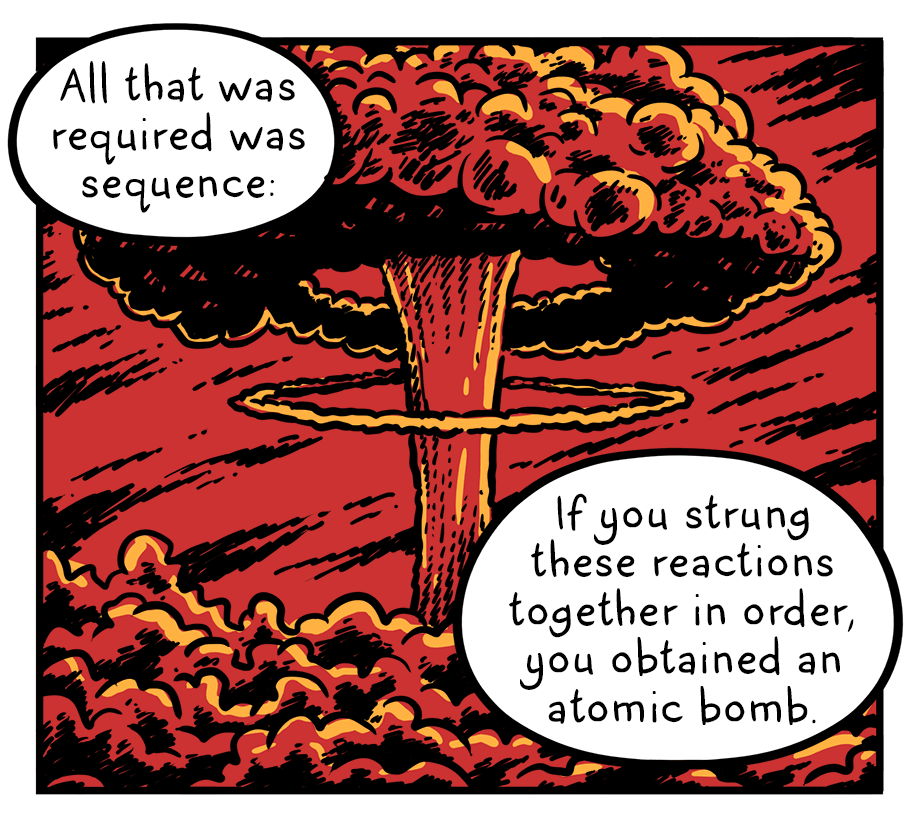
|
We are in a critical moment to make decisions that would safeguard future generations. And we are in a critical moment for artists, cultural groups, and various non-scientific communities to actively come together to interpret the present debates about gene editing technologies, creatively examine their unknowns, and engage in conversations about how to shape our future. In the last panel of “Bad Blood,” Warner recognizes the urgency of an ongoing discussion to discuss the potential impacts of gene editing on our humanity: |
|
For more information on CRISPR, you can visit CGS’ resources:
Previously on Biopolitical Times:
|
|
Images via Andy Warner/The Nib




